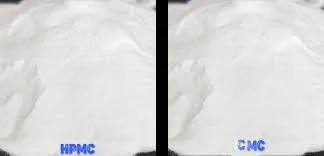
Out . 21, 2024 17:19 Back to list
Exploring the Different Grades and Applications of HPMC in Various Industries
Understanding HPMC Grades A Comprehensive Guide
Hydroxypropyl methylcellulose (HPMC) is a versatile and widely used polymer in various industries, including pharmaceuticals, food, construction, and cosmetics. The grades of HPMC are crucial as they determine the material’s properties and suitability for specific applications. This article aims to shed light on the different HPMC grades, their characteristics, and practical applications.
What is HPMC?
HPMC is a cellulose derivative that is produced through the etherification of cellulose. It is a white, odorless powder that is non-toxic and soluble in cold water, forming a gel-like solution. Its unique chemical structure gives HPMC a range of functional properties, such as thickening, emulsifying, and film-forming capabilities, making it an essential ingredient in many formulations.
Classification of HPMC Grades
HPMC grades are primarily classified based on the degree of substitution, viscosity, and specific application requirements. These classifications affect the gel strength, film formation, and solubility of the compound.
1. Degree of Substitution HPMC can be differentiated based on the degree to which hydroxypropyl and methyl groups have replaced the hydroxyl groups in cellulose. Higher substitution degrees generally lead to improved solubility and thicker solutions.
2. Viscosity HPMC grades are also categorized by their viscosity profiles, which are determined by their molecular weight. Common viscosities range from low to high, such as HPMC K4M, K15M, and K100M, indicating their performance in forming thickened solutions. For instance, K4M has a lower viscosity and is suitable for applications requiring less thickness, whereas K100M is used for thicker, more viscous requirements.
hpmc grades

3. Specialty Grades Some HPMC grades are specifically designed to meet particular application needs, such as controlled release in pharmaceuticals or specific rheological properties in food products.
Applications of HPMC Grades
1. Pharmaceuticals In the pharmaceutical industry, HPMC is often employed as a film-forming agent, binder, and controlled-release agent in drug formulations. Its versatility allows for the creation of tablet coatings that enhance stability and manage drug release profiles.
2. Food Industry In food applications, HPMC serves as a thickener, emulsifier, and stabilizer. It is commonly used in sauces, dressings, and ice creams to improve texture and consistency while also providing a vegetarian alternative to gelatin.
3. Construction HPMC grades are integral to the formulation of cement, tile adhesives, and other construction materials. They enhance workability, extend open time, and improve water retention, making them essential for quality construction solutions.
4. Cosmetics In the cosmetics sector, HPMC acts as a film-forming and thickening agent in creams, lotions, and gels. Its ability to create a smooth texture while providing moisture and stability is highly valued in personal care products.
Conclusion
In conclusion, understanding the different grades of HPMC is vital for those involved in its application across various industries. The specifications of HPMC grades, such as degree of substitution and viscosity, directly influence their performance and suitability for specific uses. Whether in pharmaceuticals, food, construction, or cosmetics, HPMC's diverse properties ensure its role as an indispensable ingredient for innovation and quality in product formulations. Selecting the right HPMC grade enables developers and manufacturers to achieve desired results, ensuring customer satisfaction and product effectiveness.
-
Versatile Hpmc Uses in Different Industries
NewsJun.19,2025
-
Redispersible Powder's Role in Enhancing Durability of Construction Products
NewsJun.19,2025
-
Hydroxyethyl Cellulose Applications Driving Green Industrial Processes
NewsJun.19,2025
-
Exploring Different Redispersible Polymer Powder
NewsJun.19,2025
-
Choosing the Right Mortar Bonding Agent
NewsJun.19,2025
-
Applications and Significance of China Hpmc in Modern Industries
NewsJun.19,2025







